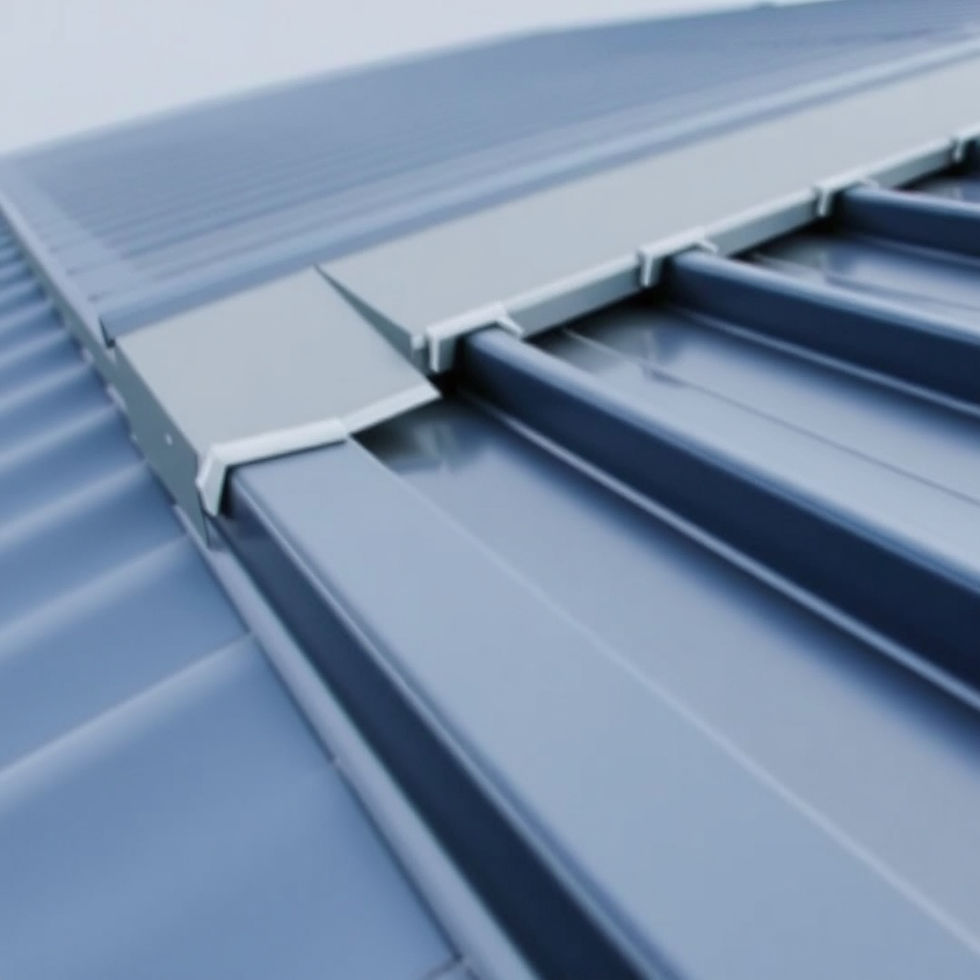What to Consider About Roof Pitch and Design When Selecting New Roofing Materials
- Staff Desk
- Jul 28
- 3 min read
Updated: Jul 29
Many homeowners choose to ignore the importance of a roof pitch. Truth is that the pitch of your roof can impact the aesthetics of your home, its durability, and roofing material selection. Roof pitch refers to the angle or slope of your roof, which can be categorized into low, medium, or steep pitches.
Each pitch allows different types of roofing materials to perform better or worse, so you must know when to plan a roofing project. Understanding these specifications can maximize your investment in roofing, save on costs, and improve the efficiency of your home. Without any further ado, let’s take a closer look below.
Understand Roof Pitch
Roof pitch is measured as a ratio of the vertical rise to the horizontal span. A roof that rises 4 inches for every 12 inches of horizontal distance is described as having a 4:12 pitch. The slope affects water drainage, heat retention, and even the types of roofing materials that are suitable.
Low-pitched roofs (less than 4:12) have a gentle slope, which can limit material options; steep pitches (greater than 8:12) allow for a broader range of materials due to their effective water runoff. Steep roofs enable better ventilation options but may necessitate more robust structural support. Finding the correct pitch improves the effectiveness of roofing materials both in function and longevity.
Types of Roofs and Their Requirements
There are various types of roofs that necessitate distinct characteristics in roofing materials due to their pitch and design. Flat roofs require materials that are highly waterproof, as they are more susceptible to pooling water. The materials used for flat roofs include rubber membranes, modified bitumen, and single-ply systems. Sloped roofs can support a more diverse range of materials, including shingles, metal, and tile. In terms of aesthetics, choosing the right roof depends on the architectural style of your home. Understand how the pitch influences metal roofing options or standardized asphalt shingles for a complete renovation. Selection should focus on these aesthetics and take practical longevity and reliable performance into account.
Climate Considerations
The local climate heavily impacts roofing material selection. Regions with heavy rainfall or snowfall may warrant materials with high water resistance so that leaks and dampness do not become an issue. In arid climates, reflective or light-colored materials can minimize heating and cooling costs. Roof pitch can either improve or mitigate these climate effects; a steeper roof allows rain and snow to slide off, reducing the likelihood of wear.
Low pitches may lead to the accumulation of debris and water, increasing maintenance needs. When considering a roof replacement or installation, homeowners should balance climate requirements with what pitch and materials would scientifically prove most efficient.
Energy Efficiency and Sustainability
Sustainability has become a deciding factor in roofing material selection. Homeowners are looking for options that improve energy efficiency, reduce consumption, and lower bills. Many modern roofing materials now come with insulation systems or reflective capabilities that can have a substantial impact on home temperature.
Roof pitch affects energy efficiency as well; steeper roofs allow better airflow and better ventilation, which can result in improved indoor air conditions without excessive energy use. Shiny or dark materials perform differently across pitches, impacting thermal regulation. Homeowners must contemplate various eco-friendly options so that they support energy conservation and cater to their roof material needs.
Installation and Maintenance Considerations
Choosing roofing materials that suit your selected pitch leads to reliable installation and maintenance practices. Roof installation should always follow the recommendations set forth by manufacturers to maintain proper warranty and performance guidelines. Steeper slopes demand advanced installation techniques, whereas flat roofs may need specialized applications to avoid leak points.
Maintenance routines, including inspections and cleaning, will vary depending on the roof's pitch, and understanding these nuances upfront will result in more effective long-term management. Engaging professional contractors with specialized knowledge in various pitch requirements can alleviate concerns during installation and future upkeep.
Cost Implications of Roof Pitch and Design
The financial aspects of roofing must reflect the impact of design and pitch. Steeper roofs entail greater material and labor costs due to complexity; low-pitched structures can cause major efficiencies. These costs are not strictly linear, since the choice of roof materials has its budget considerations. Higher-end materials will necessitate upfront investments but might yield savings in maintenance and longevity.
Local building codes and compliance issues can uncover hidden costs with varying pitch requirements that impact structural support. A well-planned approach recognizing both immediate and long-term cost implications will encourage more informed budgeting decisions.
The selection of the right roof involves multiple facets, encompassing the pitch, climate, energy efficiency, and materials. Each aspect should align with your home's needs and your personal preferences for a harmonious integration of aesthetics and functionality. Homeowners investing time in understanding their roofing options will create an environment that elevates quality and sustainability to the forefront of design.





Comments